< Page:EB1911 - Volume 16.djvu
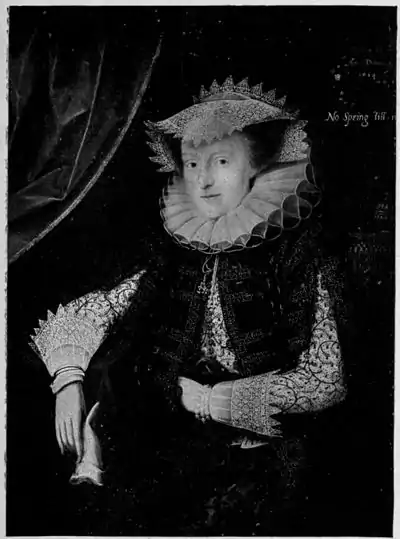
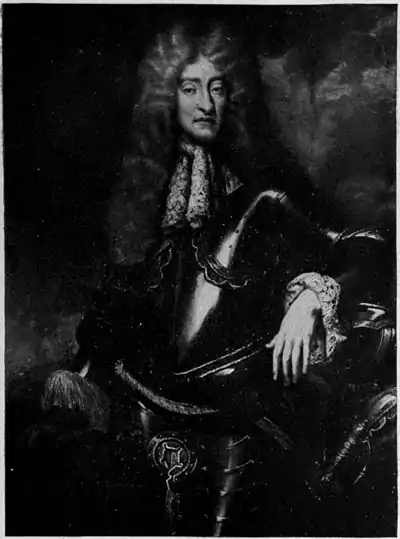
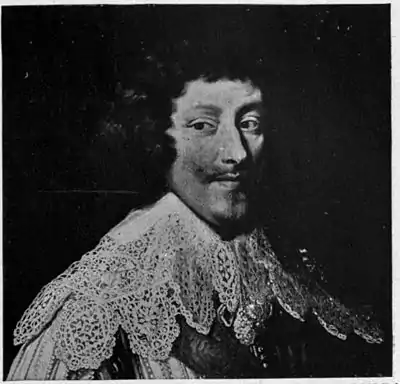
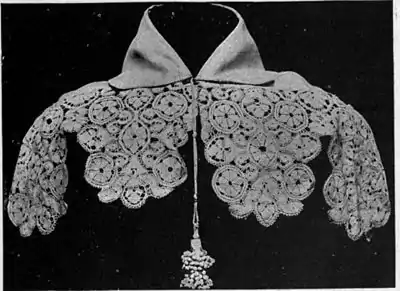
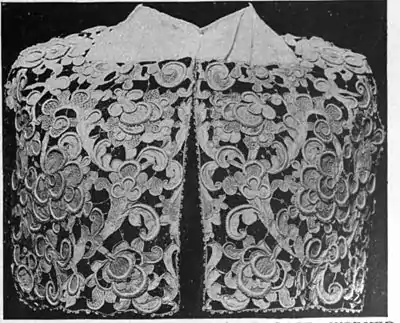
This page has been validated.
LACE
Plate III.
{| style="margin:0 auto 0 auto;width:850px;"
|- | style="padding-right:1em;vertical-align:top;width:50%;text-align:center;" |

Fig. 8.—MARY, COUNTESS OF PEMBROKE, WEARING
A COIF AND CUFFS OF RETICELLA LACE.
A COIF AND CUFFS OF RETICELLA LACE.
National Portrait Gallery. Dated 1614.

Fig. 11.—JAMES II. WEARING A JABOT AND CUFFS
OF RAISED NEEDLEPOINT LACE.
OF RAISED NEEDLEPOINT LACE.
By Riley. National Portrait Gallery. About 1685
(Figs. 8 and 11, photo by Emery Walker.)
| style="padding-left:1em;vertical-align:top;width:50%;text-align:center;" |

Fig. 9.—HENRI II., DUC DE MONTMORENCY, WEARING A
FALLING LACE COLLAR. By Le Nain. Louvre. About 1628.
FALLING LACE COLLAR. By Le Nain. Louvre. About 1628.
(By permission of Messrs Braun, Clement & Co.,
Dornach (Alsace), and Paris.)

Fig. 10.—SCALLOPPED COLLAR OF TAPE-LIKE
PILLOW-MADE LACE.
PILLOW-MADE LACE.
Possibly of English early 17th-century work. Its texture is
typical of a development in pillow-lace-making later than that
of the lower edge of “merletti a piombini” in Pl. II. fig. 3.

Fig. 12.—JABOT OF NEEDLEPOINT LACE WORKED
PARTLY IN RELIEF, AND USUALLY KNOWN AS
“GROS POINT DE VENISE.”
PARTLY IN RELIEF, AND USUALLY KNOWN AS
“GROS POINT DE VENISE.”
Middle of 17th century. Conventional scrolling stems with off-
shooting pseudo-blossoms and leafs are specially characteristic.
|}
This article is issued from Wikisource. The text is licensed under Creative Commons - Attribution - Sharealike. Additional terms may apply for the media files.